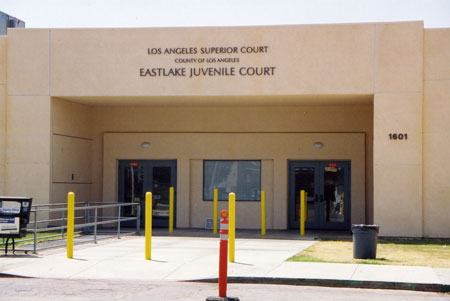Earl Ofari Hutchinson
In the past year, the Inglewood police department has been hit with a federal probe, a grueling investigation by the Office of Independent Review, probes by the Los Angeles County District Attorney’s office, the implementation of intense and lengthy new training and retraining procedures for Inglewood officers, a vigilant and proactive police commission review, and an internal affairs investigation of officer involved shootings. Yet Marcus Smith, a thirty one year old African American, was still gunned down by an Inglewood police officer. Smith is the fifth to be killed by police gunfire in the past two years.
The Smith killing as in several of the others ignited shock, frustration and rage. The killing of Smith also evoked painful memories of the gunning down by NYPD officers of Sean Bell in 2007. Smith, as Bell was a would-be bride groom, and the shooting took place after a family party; a party that Smith and his bride attended. There is no indication that Smith, as Bell, was involved in any gang or criminal involvement.
Inglewood police officials say they recovered a gun at the scene. But that only raises more thorny and disturbing questions. Did the officers issue a warning or command to Smith before opening fire?
That in turn raises even more questions. Was the gun Smith’s? If so, did he point the gun at the officers, or make any threatening move or gesture that led officers to believe that their lives were in jeopardy? Did eyewitnesses corroborate the officers version of the shooting, namely that Smith had a gun and menaced the officers? The answers are murky and blurred on the first two questions. But there’s nothing vague in the answer to the third question regarding the eyewitness corroboration of the officer’s account of the killing. All the witnesses give a wildly different version of the shooting than that of the police. They say that Smith did not have a gun, that the officers gave no warning or command, and that Smith was not given immediate medical help after he was shot. They also claim that they were beaten, verbally abused, and subject to arrest for protesting the killing.
This is not simply another instance of he said, she said when it comes to the bleary details of controversial police killings. The single most important policy directive that a police department can, no must have, is the directive on the use of deadly force by officers. Vague, or poorly written directives, or worse directives that are not bolstered with officer training, retraining, and discipline for violation of the deadly force directive is the single biggest thing that gets police departments in hot water with outside investigating agencies, stirs community anger and unrest, and results in crushing mega dollar wrongful death lawsuits and settlements that city officials must shell out. This is even more problematic in the Smith killing when it was revealed that the officer who shot Smith has also been involved in another shooting.
Nearly two decades ago, the Christopher Commission investigated the Rodney King beating. It made sweeping and landmark recommendations on LAPD reform. The most disturbing and explosive part of its report was the fingering of “problem” officers. These were officers who were involved in multiple shootings, acts of violence, and had mountains of citizen complaints lodged against them. The Commission made it clear that these officers had created a toxic environment within the LAPD. The environment was made worse by higher ups. LAPD brass had a cavalier wink and nod attitude toward their dubious conduct.
The failure to reprimand, discipline, and where warranted fire them caused huge headaches for the department. This is an especially crucial and sensitive point for in nearly all officer involved shootings, even the most questionable ones, and even where officers are found to have used excessive force, the punishment has often been minimal or totally lacking. This reinforces the deep suspicion that police officials look for ways to exonerate officers rather than to hold them accountable for violating department policies and procedures. This in turn feeds the fear and distrust that many African-Americans and Latinos have toward the police.
There are more questions that Inglewood officials must ask and answer about the Smith killing. And it’s important that accurate answers be given especially since Inglewood police have been hammered in past years for incidents involving excessive force and charges of misconduct. The memories of the videotape beating of Donovan Jackson in 2002 that shocked the nation are still fresh in the minds.
Now there’s the Smith killing. This is another one that won’t go away and again will sorely test whether the Inglewood police department and indeed Inglewood city officials have truly come to grips with the chronic problem of deadly force by its officers.
Earl Ofari Hutchinson is an author and political analyst. His weekly radio show, “The Hutchinson Report” can be heard on weekly in Los Angeles at 9:30 AM Fridays on KTYM Radio 1460 AM and live streamed nationally on ktym.com
Hutchinson will have the family of Marcus Smith and invited Inglewood police and city officials on “The Hutchinson Report” on Friday May 22 at 9:30 AM





.jpg)
